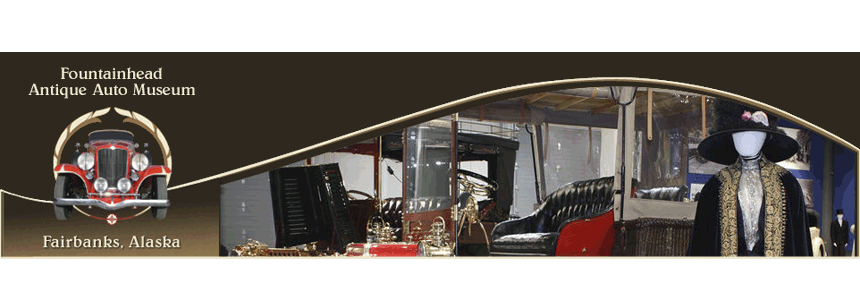by Nancy DeWitt
©
Fountainhead Antique Auto Museum
In August of 2012, two amphibious crafts were
demonstrated to the U.S. Coast Guard in Barrow, Alaska for potential use on arctic missions. These included the tank-like Arktos made in British Columbia and the
Amphib Alaska made in Ketchikan. These high-tech machines are only the latest in a string of amphibious vehicles that have cruised Alaska's land and waters over the past several decades.
 |
| Photo courtesy of Candy Waugaman |
Many of our readers are no doubt familiar with the German-made
Amphicar, but you may be surprised to learn that several were sold in Alaska back in the mid 1960s. Nick Rauch was the Anchorage dealer, while Jim Thompson sold Amphicars in Fairbanks. One of the Fairbanks Amphicars is still owned by an Alaskan but kept in Oregon. It's possible that it is the same one in the photo at right, which was taken in downtown Fairbanks on August 17, 1967 when a devastating flood inundated our city. The caption reads: "Everyone thought this guy was crazy to buy an Amphicar when he lived so far from the water, but the thing sure comes in handy during a flood."
Nick Rauch had his own Amphicar, as did Ivan and Oro Stewart, the original owners of the iconic
Stewart's Photo Shop in Anchorage. In June of 1968, Nick, his 11 year-old son Phillip, Ivan and Oro drove their Amphicars down the the Yukon River from Eagle to Circle City. Their adventure is chronicled
here.
Several military amphibious craft have passed through Alaska, including a Studebaker M29 Weasel (seen
here in the 1947 Fairbanks Winter Carnival Parade) and an
Army alligator used in the Aleutians during WWII. A Ford GPA Seagoing Jeep ("Seep") driven by
Frank and Helen Schreider traveled from Alaska to the tip of South America from 1954-56. Australian Ben Carlin drove a Seep from Tokyo to Anchorage in 1957 during his
around-the-world trip.
I'm not sure if Paul Satko's Buick-powered "Ark of Juneau" qualifies as a true amphibious vehicle, but this tale of the Satko family's
1938-1940 adventure in it across the U.S. and then north to Juneau is well worth a read. Apparently the Buick engine still rests on a beach near Juneau.
 |
| from Popular Science Monthly October 1928 |
To the best of my knowledge, the craft pictured at right was the first amphibious vehicle in Alaska. The "Honukai" (Sea Turtle) was designed by Dr. Thomas A. Jaggar, founder of the Hawaiian Volcano Observatory and a world-acclaimed geophysicist, author and inventor. He built his steel-bodied "beach boat" on an elongated 1926 Ford chassis mounted on oak timbers with a Smith Formatruck rear axle attached. On land, the Honukai could travel 25 mph. Twin screw propellers drove it in the water, while the front disc wheels served as rudders. The radiator set on top of the cabin, while a cooling pipe for the circulating water encircled the boat below the water line.
 |
Library of Congress
LC-USZ62-105318 |
The Honukai was used successfully on a 1928 National Geographic expedition from Shumigan Island to King Cove. Its exceptionally low gears allowed the crew to drive right up the sides of volcanoes. Jagger later provided his vehicle data to the War and Navy Departments. A November 1945 article in
Popular Mechanics describes how the famous Army duck (DUKW) and Weasel amphibious truck were descended from Jaggar's Honukai. An interesting connection to Alaska automotive history!
Anyone know of other amphibious vehicles that reached Alaska?




No comments:
Post a Comment
Blogging about the Fountainhead Antique Auto Museum's latest news, adventures and research